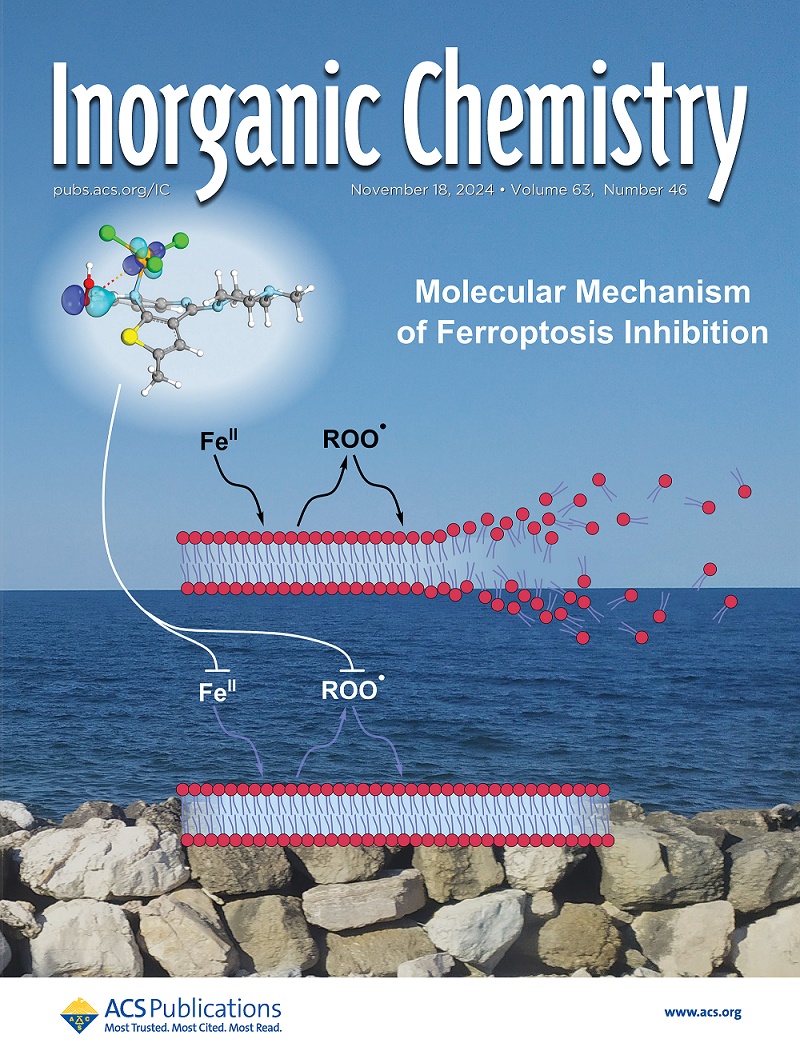Spectroscopic Properties of Americium(III) in Mineral Acid Media.
IF 4.7
2区 化学
Q1 CHEMISTRY, INORGANIC & NUCLEAR
引用次数: 0
Abstract
We report the preparation and optical characterization of three solutions of Am(III) in common aqueous (aq.) mineral acids (HCl, HNO3, and HBr), including absorption, emission, and Raman vibrational analyses. To our knowledge, this study provides the first detailed absorption spectra of Am(III) spanning the entire UV/vis/NIR region in these mineral acids reported since the 1960s. Using this high-resolution absorption data, provided in an open access format for the broader field, we build on prior work by Carnall and others to provide detailed optical analysis including all transition assignments. This work also includes the first reported absorption spectrum of Am(III) in aq. HBr. Characteristic Am(III) luminescence could be detected from all three samples. These are the first reports of emission from Am(III) in these acid systems, which build on prior emission reports collected from aq. HClO4 solutions. The acquired emission spectra display anion-dependent shifting of the visible-region transitions by up to 21 nm from their predicted positions, akin to the nephelauxetic effect. The shift magnitude trends linearly according to acid pKa and more generally according to the transition metal spectrochemical series. These ligand field effects, coupled with luminescence lifetime experiments, indicate that weak Am-X interactions persist in solution.无机酸介质中镅(III)的光谱特性。
我们报道了三种Am(III)溶液在常见无机酸(HCl, HNO3和HBr)中的制备和光学表征,包括吸收,发射和拉曼振动分析。据我们所知,这项研究提供了自20世纪60年代以来报道的这些矿物酸中Am(III)跨越整个UV/vis/NIR区域的详细吸收光谱。利用这种高分辨率的吸收数据,以开放获取的格式提供给更广泛的领域,我们在Carnall和其他人之前的工作的基础上提供了详细的光学分析,包括所有的跃迁分配。这项工作还包括首次报道的Am(III)在aq. HBr中的吸收光谱。三种样品均可检测到特征Am(III)发光。这是在先前从aq. HClO4溶液中收集的排放报告的基础上,在这些酸体系中首次报道了Am(III)的排放。所获得的发射光谱显示阴离子相关的可见区跃迁从其预测位置移动高达21 nm,类似于浊光效应。根据酸性pKa和更普遍的根据过渡金属光谱化学系列,位移幅度呈线性趋势。这些配体场效应,加上发光寿命实验,表明弱的Am-X相互作用在溶液中持续存在。
本文章由计算机程序翻译,如有差异,请以英文原文为准。
求助全文
约1分钟内获得全文
求助全文
来源期刊

Inorganic Chemistry
化学-无机化学与核化学
CiteScore
7.60
自引率
13.00%
发文量
1960
审稿时长
1.9 months
期刊介绍:
Inorganic Chemistry publishes fundamental studies in all phases of inorganic chemistry. Coverage includes experimental and theoretical reports on quantitative studies of structure and thermodynamics, kinetics, mechanisms of inorganic reactions, bioinorganic chemistry, and relevant aspects of organometallic chemistry, solid-state phenomena, and chemical bonding theory. Emphasis is placed on the synthesis, structure, thermodynamics, reactivity, spectroscopy, and bonding properties of significant new and known compounds.
 求助内容:
求助内容: 应助结果提醒方式:
应助结果提醒方式:


